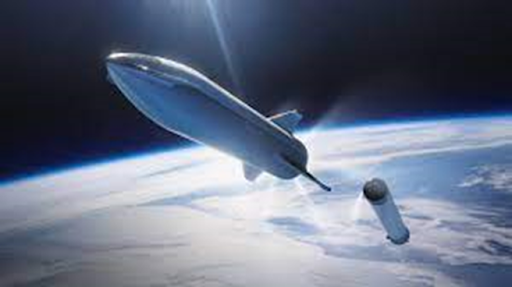NASA Artemis Mission Progresses with SpaceX Starship Test Flight
As part of NASA’s
Artemis campaign to return humans to the Moon for the benefit of all, the
agency is working with SpaceX to develop the company’s Starship human landing
system (HLS), which will land astronauts near the Moon’s South Pole during the
Artemis III and Artemis IV missions. On March 14, SpaceX launched the third
integrated flight test of its Super Heavy booster and Starship upper stage, an
important milestone toward providing NASA with a Starship HLS for its Artemis missions.
A complement of 33 Raptor engines, fueled by
super-cooled liquid methane and liquid oxygen, powered the Super Heavy booster
with Starship stacked on top, from the company’s Starbase orbital launch pad at
8:25 a.m. CDT. Starship, using six Raptor engines, separated from the Super
Heavy booster employing a hot-staging technique to fire the engines before
separation at approximately three minutes into the flight, following the flight
plan. This was the third flight test of the integrated Super Heavy-Starship
system.
“With each flight test, SpaceX attempts increasingly
ambitious objectives for Starship to learn as much as possible for future
mission systems development. The ability to test key systems and processes in
flight scenarios like these integrated tests allows both NASA and SpaceX to gather
crucial data needed for the continued development of Starship HLS,” said Lisa
Watson-Morgan, HLS Program Manager at NASA’s Marshall Space Flight Center in
Huntsville, Alabama.
This test accomplished several important firsts that will
contribute to the development of Starship for Artemis lunar
landing missions. The spacecraft reached its expected orbit and Starship
completed the full-duration ascent burn.
One objective closely tied to future Artemis operations is
the transfer of thousands of pounds of cryogenic propellant between internal
tanks during the spacecraft’s coast phase as part of NASA’s Space Technology
Missions Directorate 2020 Tipping Point awards. The propellant transfer
demonstration operations were completed, and the NASA-SpaceX team is currently
reviewing the flight data that was received. This Tipping Point technology
demonstration is one of more than 20 development activities NASA is undertaking
to solve the challenges of using cryogenic fluids during future missions.
As a key step toward understanding how super-cooled
propellant sloshes within the tanks when the engines shut down, and how that
movement affects Starship’s stability while in orbit, engineers will study
flight test data to assess the performance of thrusters that control Starship’s
orientation in space. They are also interested to learn more about how the
fluid’s movement within the tanks can be settled to maximize propellant
transfer efficiency and ensure Raptor engines
receive needed propellant conditions to support restart in orbit.
“Storing and transferring cryogenic propellant in orbit has
never been attempted on this scale before,” said Jeremy Kenny, project manager,
NASA’s
Cryogenic Fluid Management Portfolio at Marshall. “But this is a game-changing
technology that must be developed and matured for science and exploration
missions at the Moon, Mars, and those that will venture even deeper into our
solar system.”
NASA will prepare for human missions to Mars by landing the
first woman, first person of color, and first astronaut from an international
partner nation on the moon as part of the Artemis campaign.
Along with the Space Launch System rocket, Orion spacecraft, sophisticated
spacesuits and rovers, exploration ground systems, and the Gateway space
station, commercial human landing systems are essential to deep space
exploration.
NASA will prepare for human missions to Mars by landing the
first woman, first person of color, and first astronaut from an international
partner nation on the moon as part of the Artemis campaign. Along with the
Space Launch System rocket, Orion spacecraft, sophisticated spacesuits and
rovers, exploration ground systems, and the Gateway space station, commercial
human landing systems are essential to deep space exploration.
Technological Advancements:
The Artemis program drives technological advancements in
aerospace engineering, with innovations in rocket design, propulsion systems,
and space habitats. Similarly, "My Amazon Bee" leverages advanced
technology and data analytics to optimize advertising campaigns, utilizing
algorithms and machine learning to target relevant audiences and maximize ROI.
Conclusion:
In conclusion, the progress of NASA's Artemis mission,
exemplified by the recent SpaceX Starship test flight, symbolizes humanity's
relentless pursuit of exploration and discovery. This monumental achievement
resonates beyond the realm of space exploration, offering inspiration and
insights that extend to diverse industries and endeavors here on Earth. Through
its innovative approach to Amazon advertising, "My Amazon Bee" stands as
a testament to the spirit of exploration and innovation, forging new frontiers
and driving progress in the ever-evolving landscape of e-commerce. The
similarities between these two projects serve as a reminder of the limitless
potential found in human creativity and teamwork as we look to the future.







Comments
Post a Comment